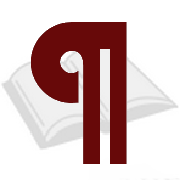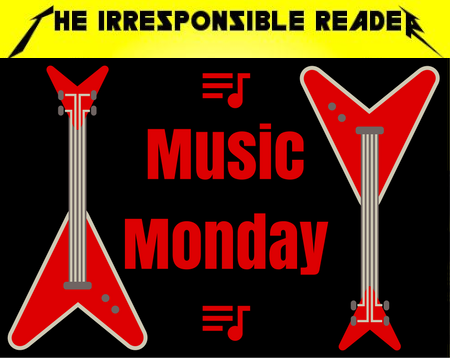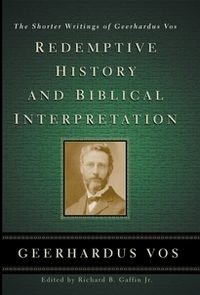by Geerhardus Vos, edited by Richard B. Gaffin, Jr.
DETAILS:
Publisher: P & R Publishing
Publication Date: June 1, 2021
Format: Hardcover
Length: 543 pg.
Read Date: January 7-September 1, 2024

“Jehovah appeared of old unto me saying, Yea, I have loved thee with ap everlasting love, therefore have I drawn out long lovingkindness unto thee” (31:3), in order to do justice to their sweetness and beauty. This is like coming out of the waste of the wilderness into a land of paradise. Even quite objectively regarded, the piece has its ineffable charm. It is like a landscape bathed in the glow of the harvest-season. In the farther distance winds the caravan of returning captives, coming homeward with weeping and supplication along rivers of water. The people are seen flowing unto the goodness of Jehovah, to the grain, the new wine, and the oil. In the foreground rises Judah with her cities, a mountain resplendent in holiness. And the whole is made musical by the sound of tabrets in the dances of them that make merry. Still, while a delight in itself, the scene, in order to be fully enjoyed, should be seen through the eyes of the prophet. It sounds like the notes of a bird finding its cage unexpectedly open, and with delirious joy exploring the new-gained freedom. For once the vision and the seer’s deepest desire are perfectly blended. The lyre thrills in unison with something that sings itself within and needs no composing. The words move in absolute harmony with the graceful movements of the dancing virgins in the feast. Surely this prophet bore within himself a great poet. One cannot help feeling this even in his litanies with their forecast of doom on the sin of Israel. But most effectively, it shows itself in the larger and freer rhythms of the ascriptions of glory to Jehovah. It is in part a poet’s satisfaction, that at the receding of the tide of vision, finds voice in the spontaneous words, “Upon this I awaked and beheld, and my sleep was sweet unto me” (31:26). For the prophets are the only true interpreters of the sleeping or waking moments in which God communicated His word unto them.
What’s Redemptive History & Biblical Interpretation About?
Paraphrasing the Preface, the plan for this work was to include almost all of Vos’s work that wasn’t included in his “major works.” But there was just too much of it—so Gaffin limited this to his shorter works that weren’t sermons or that weren’t dated. We get seven “Major Biblical and Theological Studies,” sixteen “Shorter Biblical Studies,” two addresses, and nine book reviews.
Those reviews “either deal with books of continuing influence or provide a valuable statement of Vos’s own views.”
Major Studies
The book starts out with the heavy-weights of the collection20+ page articles on things like “The Eschatology of the New Testament,” “The Range of the Logos Title in the Prologue to the Fourth Gospel,” two (dynamite) pieces on the book of Hebrews, the Doctrine of the Covenant, and so on.
Most of these were worth the purchase price of the book as a whole—I’ve read entire volumes on some of these topics that didn’t give me as much to chew on as these did. Most of what he said in his article on Biblical Theology has been echoed by Vos’s students and readers for decades, so I didn’t get as much from that one as I’d hoped—but it was nice hearing it from his own pen.
Basically, just an outstanding way to start this book, and a great way to spend 270 or so pages.
The Shorter Studies and Addresses
These were a mixed bag of focused and impactful articles and some that had to settle for being interesting and thoughtful. There was one article here that went largely over my head—and probably relied too much on linguistic scholarship that has probably shifted a great deal in the century +/- since it was written. Sometimes—especially in these shorter pieces—you can see that Vos also dabbled in poetry, because some of the phrasing is so lyrical.
The addresses make me wish we had video—or at least audio—recordings of him. I bet those were fascinating to hear—they’re fascinating to read, but probably would give an extra punch when delivered. The first of the addresses, “The Scriptural Doctrine of the Love of God” is something I should read annually—at least.
Book Reviews
Dr. Denney’s latest book puts us under the strange necessity of heartily praising its contents and at the same time deploring most deeply the main purpose for which it was written. We confess to having seldom read a book productive of such a sudden and painful revulsion of feeling, from a sympathetic and enthusiastically admiring state of mind to one of sharp protest and radical dissent, as the work before us. Dr. Denney’s style and manner of presentation are so brilliant and yet so warm and genial, he carries us along so easily, so absolutely compels our belief in the irrefutableness of his argument, that, when he proceeds to make the disagreeable application, we find it more than ordinarily difficult to arrest the momentum of conviction acquired and turn our minds all at once in the opposite direction. The sense of disillusionment at the close is so poignant that it inevitably gives rise to the question, whether perhaps the profound agreement in which we imagined ourselves to be with the writer was not after all a delusion, arising from a misinterpretation on our part of the real drift of the discussion, so that, if we had only read more carefully and between the lines, we would have disagreed from the beginning. Whether the case lies actually as just stated or whether it is a simple instance of non sequitur between approved premises and a false conclusion, we find it extremely difficult to decide.
I really figured that the home stretch of this book contained in these reviews would be easy reading, and really something I could skim because who’d ever heard of most of these books? Wow, I could not have been more wrong (and, it had been months since I read the Preface, so I’d forgotten that “valuable statement of Vos’s own views” part).
To start with, we get reviews of the first two volumes of Bavinck’s Gereformeerde Dogmatiek (known in English as Reformed Dogmatics)—I wish we’d gotten reviews of all four volumes. What I found interesting here was how much what Vos said about these volumes matched what my friends, others in my Church, and I have said about Bavinck’s writing.
Then we move to the books he wasn’t quite so positive about—there are two books by Albert Schweitzer here, and I at least know a little about him, but the other names were new to me. I’m not positive, but I think that all but Bavinck fall under the “statement of Vos’s own views.” These all share a similar outline: a pretty glowing introductory paragraph, a quick synopsis of the work or its premise, and a very nice one-paragraph conclusion. He’s largely complimentary in these parts, recognizing the labor, the experience, and the intelligence of the author. It’s all the stuff in-between where Vos will talk about the many, many flaws of these works and will challenge the thinking, conclusions, and some of the basic assumptions involved. He is capable of appreciating the work and its strengths—and has no problem talking about them—but still talking about the faults, in a serious but not in an offensive or mean-spirited way. He really gives an example for his readers in that way.
He also does a bang-up job of working in those principles and types of argument that can be profitable, even if the works he’s talking about have faded from almost everyone’s memory.
So, what did I think about Redemptive History & Biblical Interpretation?
Let us not forget, however, that as of all theology, so of Biblical Theology, the highest aim cannot lie in man, or in anything that serves the crea. ture. Its most excellent practical use is surely this, that it grants us a new vision of the glory of Him who has made all things to the praise of His own wonderful name. As the Uncreated, the Unchangeable, Eternal God, He lives above the sphere of history. He is the Being and never the Becoming One. And, no doubt, when once this veil of time shall be drawn aside, when we shall see face to face, then also the necessity for viewing His knowledge in the glass of history will cease. But since on our behalf and for our salvation He has condescended to work and speak in the form of time, and thus to make His works and His speech partake of that peculiar glory that attaches to all organic growth, let us also seek to know Him as the One that is, that was, and that is to come, in order that no note may be lacking in that psalm of praise to be sung by the Church into which all our Theology must issue.
This is not going to come as a shock to anyone who’s read any of the things I’ve said about Vos in the previous four posts about his work, but this collection just knocked my socks off. I read an article a week and it was one of the highlights of the week for me to do so.
I learned a lot. Not just about Vos and his brand of theology, but about the Scriptures and the Lord who gave them to His Church so she would see Him and His glory in them.
The writing is fantastic. The thinking is even better. I had to think about a lot of this, to ponder and wrestle with it, and got to revel in it, too.
I can’t think of a reason to not read this book—it’ll reward careful reading (and casual reading, too—just not as richly). It’s just great stuff.








![]()

























